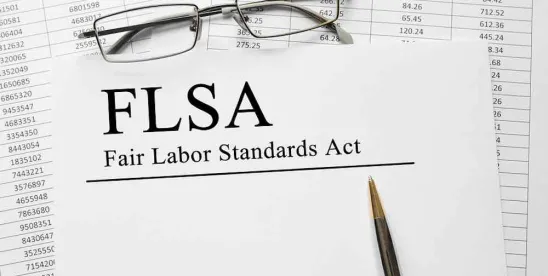The Trump administration is seeking to pause appeals over two rulings that blocked the U.S. Department of Labor’s (DOL) April 2024 overtime rule, which sought to increase the minimum salary for overtime exemptions for white-collar employees. The move raises doubts that the administration will continue litigation to revive the overtime rule.
Quick Hits
- The Trump administration has requested the Fifth Circuit to pause appeals regarding the DOL’s overtime exemption rule, indicating a potential reconsideration of the recently contested salary thresholds for white-collar employees.
- As a result of this development, the existing salary thresholds established by the 2019 DOL rule remain effective, while the future of the 2024 overtime rule appears uncertain under the new DOL leadership.
On April 24, 2025, attorneys with the U.S. Department of Justice (DOJ) under the Trump administration filed an unopposed motion asking the U.S. Court of Appeals for the Fifth Circuit to hold in abeyance the appeals in two cases in order to give the DOL time to evaluate the April 2024 overtime rule. The move comes after a leadership change at the DOL following President Donald Trump taking office in January 2025.
According to the motions, the new leadership at the DOL “has informed undersigned counsel that it intends to reconsider the rule at issue in this litigation” and “[a]beyance will permit agency leadership time to engage in this decision-making process and will conserve judicial resources.”
The April 2024 DOL final rule would have raised the minimum salary for the Fair Labor Standards Act’s (FLSA) overtime exemption for executive, administrative, and professional (EAP) employees to $1,128 per week, the equivalent of a $58,656 annual salary, and the minimum salary for the exemption for “highly compensated employees” (HCE) exemption to $151,164 per year on January 1, 2025. The rule further would have called for updates to those thresholds every three years based on up-to-date wage data.
However, in November 2024, the U.S. District Court for the Eastern District of Texas vacated the DOL’s 2024 rule in Texas v. Department of Labor, finding the rule exceeded the agency’s statutory authority. The Biden DOL appealed the ruling to the Fifth Circuit.
Then, in December 2024, the Eastern District of Texas issued a summary judgment ruling in a separate case, Flint Avenue LLC v. Department of Labor, again invalidating the overtime rule. Surprisingly, the Trump DOL appealed that ruling in February 2025 amid expectations that the new administration would drop the Biden-era overtime rule altogether.
Those rulings leave in place minimum levels set under a 2019 DOL rule, which set the EAP exemption at $684 per week ($35,568 per year) and the HCE exemption at $107,432 per year.
However, that 2019 rule has also been the subject of a legal challenge. The Fifth Circuit affirmed the 2019 rule in September 2024, finding that the DOL has the authority to set minimum salary requirements for the EAP exemption as part of its “explicitly delegated authority to define and delimit the terms of the Exemption.” The Fifth Circuit later denied a request for en banc review, and the plaintiff has pledged to file a petition for certiorari for review by the Supreme Court of the United States.
Next Steps
Based on recent motions to halt the appeals, it is anticipated that the Trump DOL will abandon the 2024 overtime rule, and it is unlikely that the Fifth Circuit will be called upon to render a decision on the DOL’s authority to issue such a rule. The DOL plans to provide “periodic updates” to the Fifth Circuit and status reports at least every sixty days, according to the motions.
Even if the appeals continue, it seems likely the Fifth Circuit would affirm the rule’s invalidation. However, if the Fifth Circuit were to vacate in whole or in part, those portions of the overtime rule would take effect, meaning the EAP thresholds could jump to $1,128 per week and potentially be subject to automatic adjustment on July 1, 2027.
For now, the exemption thresholds under the DOL’s 2019 rule (EAP exemption at $684 per week and the HCE exemption at $107,432 per year) remain in place. Employers may want to stay aware of the possibility of a new overtime rule from the Trump DOL and review their compliance with state thresholds for overtime exempt status, which can be significantly higher than the current FLSA threshold.
The Trump administration has taken a similar approach to appeals to the Federal Trade Commission’s (FTC) rule to ban noncompete agreements, seeking to halt appeals to two rulings that invalidated and partially blocked the FTC rule.





 />i
/>i
